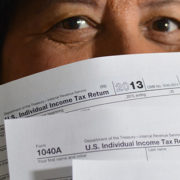A Distributed Workforce Can Bring Tax Savings for Businesses
Businesses could be saving money on local taxes without even realizing it.
With more companies making remote work a permanent option, a more distributed workforce will be the norm moving forward. Not only does it provide tremendous flexibility for employees, allowing them to work wherever suits them best, but it also allows companies to take a much more agile approach to hiring and team building. Not to mention the obvious cost savings where offices can be reduced in size or eliminated altogether.
But many companies are missing out on a significant—albeit somewhat hidden—savings opportunity: local and municipal taxes. Across the country, cities like New York, San Francisco, and Los Angeles assess business taxes based on sales and services performed within the city. For most, these taxes are tied directly to the physical presence of employees working within the local jurisdiction.
With workers now distributed outside city limits, many companies are unknowingly overpaying these local taxes. The problem is that navigating this tax landscape is extremely complex, especially without accurate, reliable data. Organizations that know exactly where their employees are working—and can prove it—could potentially save millions of dollars in taxes this year.
Here’s how:
Know Where Your Employees Are Working
Since roughly mid-March, millions of workers have been displaced from their downtown offices, most working from home outside of city limits. In New York, a number of hedge funds, asset management, and legal firms have already said they don’t plan to return to their Manhattan offices. The same goes for workers at Twitter, Square and many others in San Francisco.
But this flexibility for employees makes it extremely difficult for employers to keep up, made worse when employees don’t notify their manager or HR of their working location. Cities, states, and countries all have varying regulations for the type of work and the length of time an individual can work within their borders before both they and their employer owe taxes, and this complexity can quickly snowball into major compliance risk.
Many companies continue to pay millions in local taxes as though it’s business as usual. New York’s 4% Unincorporated Business Tax (UBT) raised some $2.14 billion last year alone and San Francisco levies a 0.38% payroll expense tax, up to 0.56% gross receipts tax, and up to 0.60% homelessness tax for employees working in the city.
By implementing a solution to identify and track employee locations, companies can substantially lower their tax burden and avoid overpaying these city taxes. Hundreds of millions in tax revenue are at stake, and there’s an opportunity for tax-savvy hedge funds, law firms, and UBT-prone businesses to reduce their tax footprint by an average of 2-3%.
With accurate data, companies can say with confidence exactly where their people are located—and who’s subject to the tax.
Manage Tax Compliance
Locating your people is only step one, especially for large organizations with multiple offices. Many businesses still manage tax compliance across different municipalities with spreadsheets, which isn’t feasible when things change rapidly. With employees in various locations subject to different regulation, companies rely on humans to keep the spreadsheet updated to ensure accurate accounting and payment. When people move or the rules change, the spreadsheet is instantly outdated.
Not to mention, with government budgets already tight due to the economic slowdown, they need revenue—and that comes in the form of audits. With so many moving parts to manage for HR, legal, tax, risk management and finance, that means having indisputable proof in the form of audit-quality reporting is crucial for avoiding costly audits and penalties. Lacking a confident audit trail, companies may have no choice but to overpay, at a substantial blow to their bottom line.
With a solution in place that automatically tracks employee location in real time, companies can rely on this data to know who’s where and what laws apply at any given time. Automated solutions can leverage a multitude of factors, like a mobile or laptop app log in, VPN data, GPS and more, to automatically and accurately determine an employee’s location. Even better, with audit-ready reporting, companies can prove their position and validate their tax liability to avoid noncompliance risk and underpayment penalties.
CFOs Should Be Part of the Solution
Amid the current economic uncertainties, no company can afford to overpay or underpay, exposing themselves to the high cost of an audit, penalties and overwhelming tax liabilities. Deploying a solution that provides automatic tracking of employees on the move is the only effective, realistic and reliable way to maintain tax compliance with flexible and distributed workforces.
With remote work only expected to grow, now is the time to invest in solutions that deliver immediate ROI and compliance peace of mind, along with a robust foundation for companies to manage this new world of work. Companies—and specifically CFOs—can begin to take advantage of tax savings immediately by proving their employees are not subject to municipal taxes, while also ensuring accurate reporting and payment for wherever their travels lead.
AUTHOR: Terry Schmid is CFO of Topia.
Call WXC for more details.













